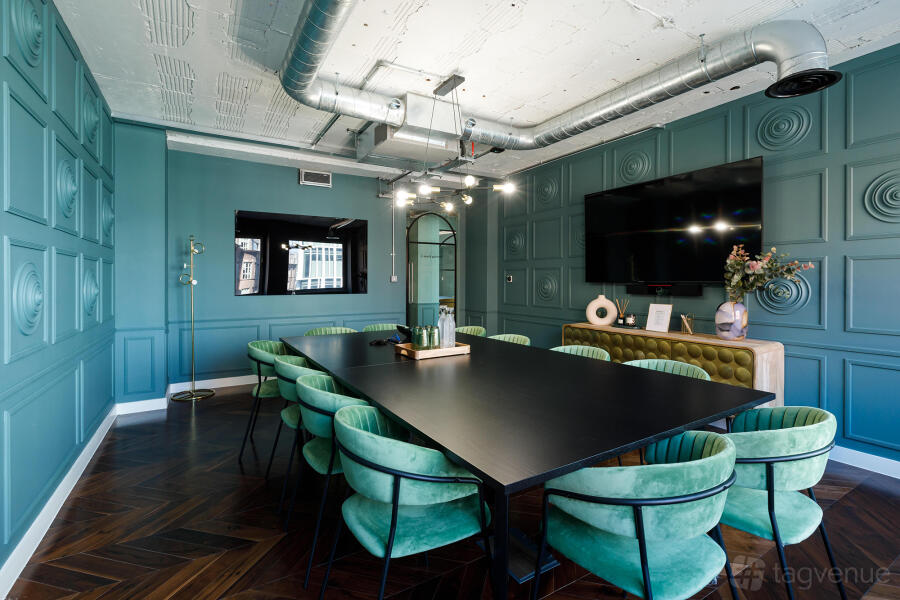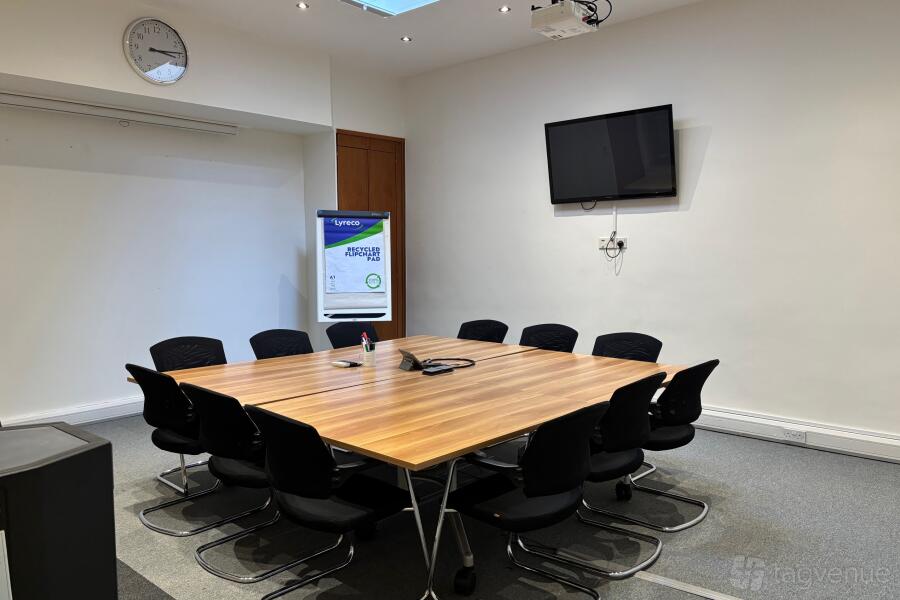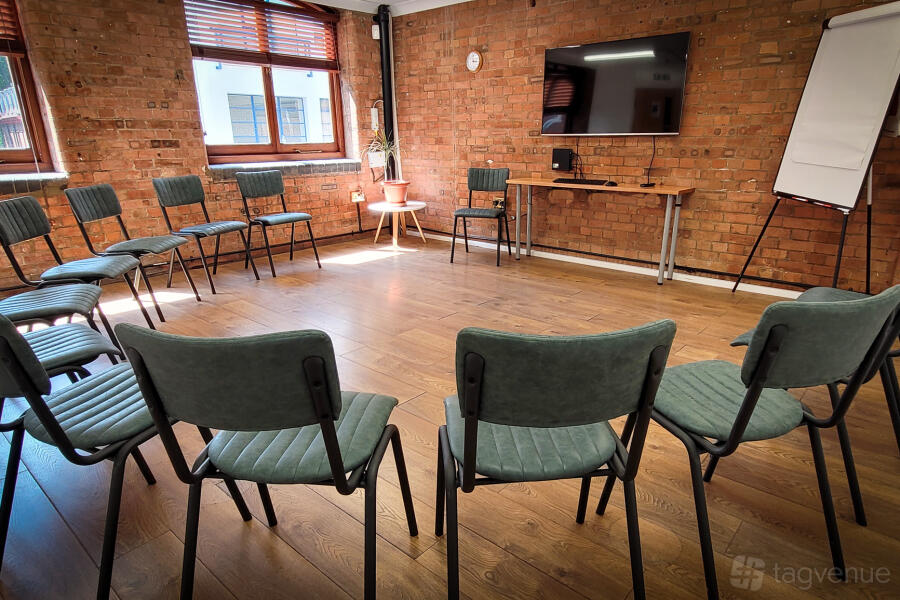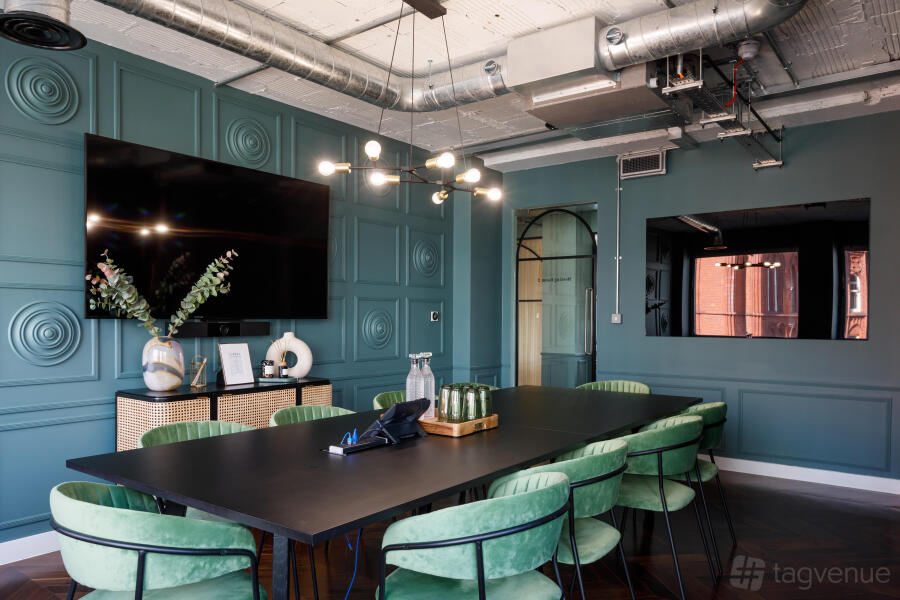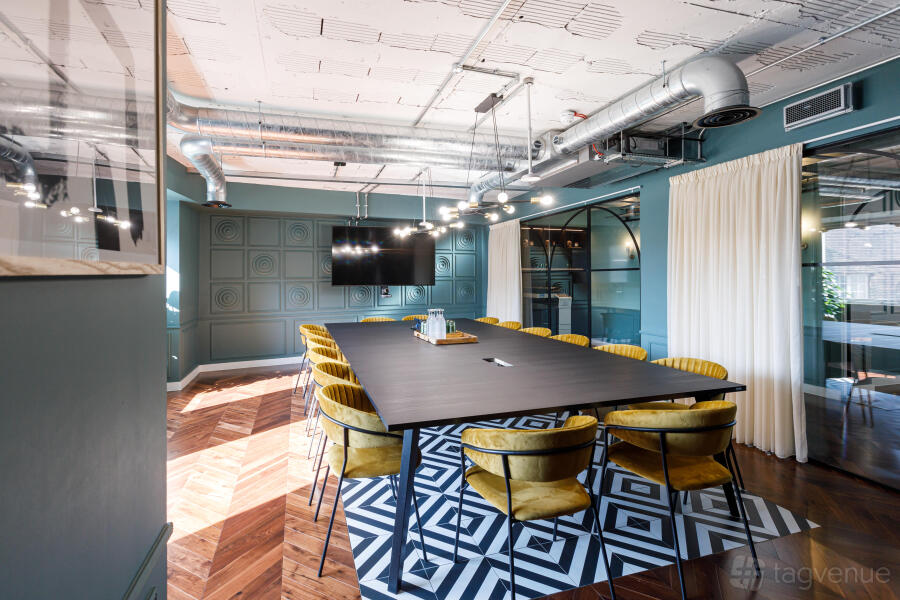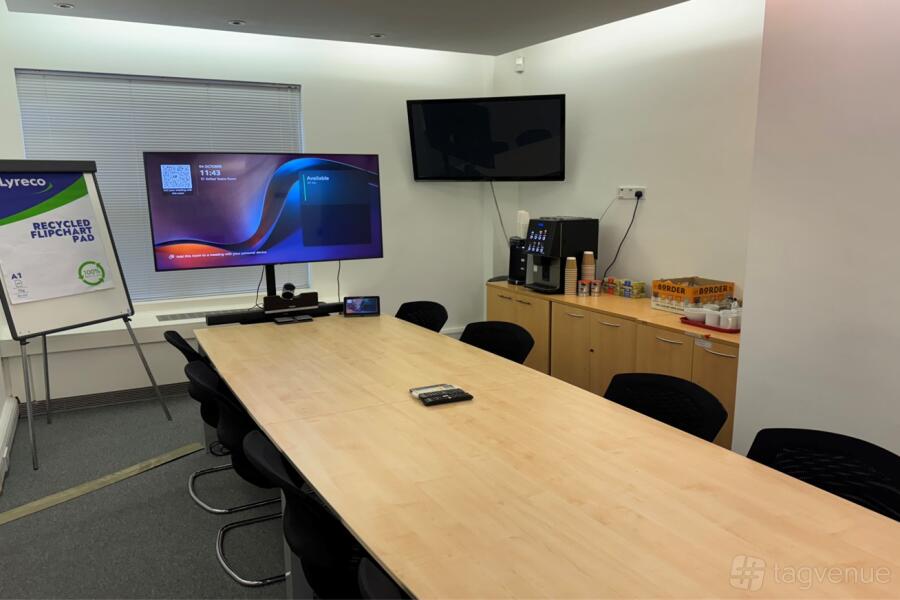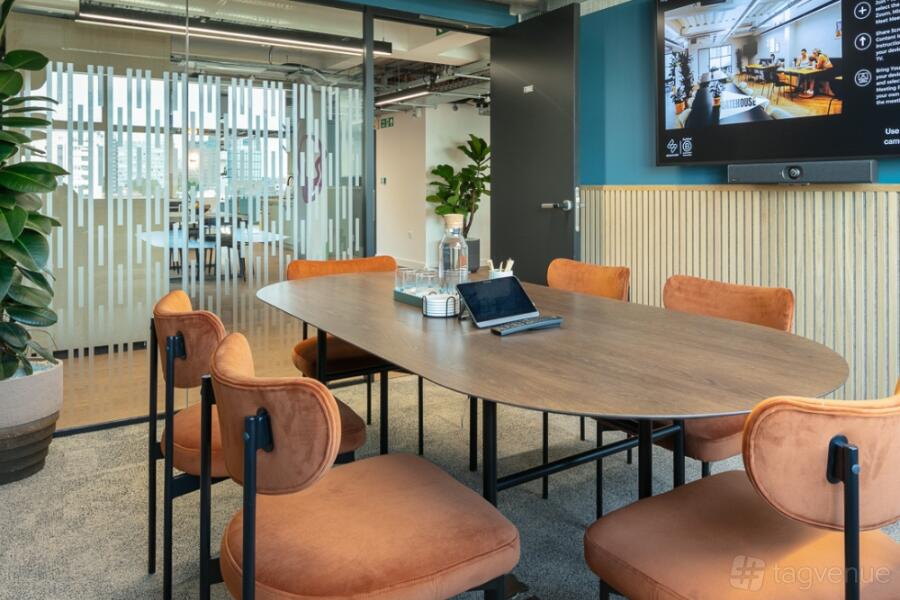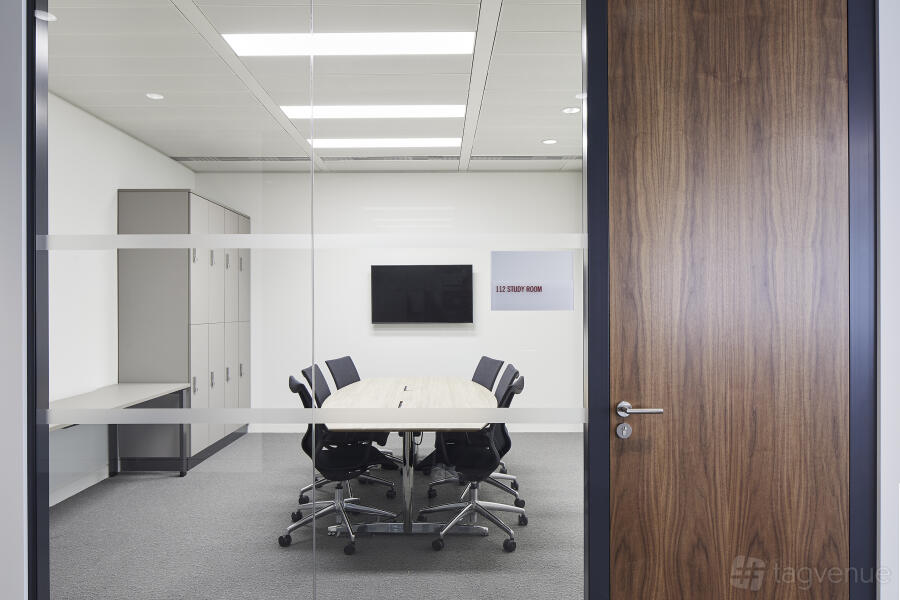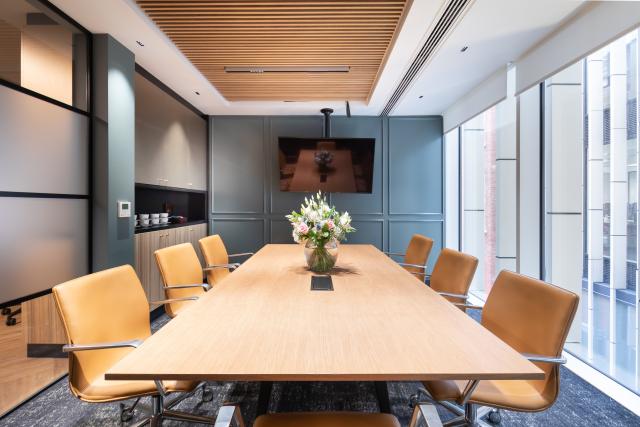Top Meeting Rooms in Farringdon
Looking for meeting rooms in Farringdon? You’re in exactly the right spot. With its central London location, excellent transport links (Farringdon Station connects to the Elizabeth Line, Thameslink, and Underground), and close proximity to the City, Farringdon is a smart pick for hosting business meetings, team sessions, and workshops. So, don’t wait any longer. Your perfect meeting room is just a few clicks away!
-
from £60
hire fee / per hourBook nowCREO, Meeting Room 3
12 guestsWestgate HouseChancery Lane StationFarringdon, London#Supervenue
KKate P.
“Incredibly helpful staff, beautiful room, excellent facilities, including audiovisual for a hybrid meeting.” -
from £120
hire fee / per hourBook nowCardiff Room
18 guestsFMB Meeting RoomsFarringdon StationFarringdon, London#Supervenue
LLouise S.
“As always Catherine was very helpful in responding to booking request. It's a really good size meeting room.” -
from £55
hire fee / per hourBook nowGreen Room
15 guestsRemark! EventsChancery Lane StationFarringdon, London#Supervenue
TTim W.
“Perfect for our board meeting - we will be booking the Green Room again soon.” -
from £150
hire fee / per hourBook nowEdinburgh Room
30 guestsFMB Meeting RoomsFarringdon StationFarringdon, London#Supervenue
FFrankie P.
“Great venue which is perfect for the company's monthly team meetings.” -
from £90
hire fee / per hourBook nowBlue Room
30 guestsRemark! EventsChancery Lane StationFarringdon, London#Supervenue
KKate O.
“The meeting room was perfect and the location was great.” -
from £125
hire fee / per hourBook nowYellow Room
40 guestsRemark! EventsChancery Lane StationFarringdon, London#Supervenue
AAtinuke S.
“Really great! Emma and Wesley were a great help! Room was perfect and I had a great meeting” -
from £55
hire fee / per hourBook nowPurple Room
15 guestsRemark! EventsChancery Lane StationFarringdon, London#Supervenue
SSudeshna C.
“Good meeting venue, easily accessible.” -
from £54
hire fee / per hourBook nowCREO, Meeting Room 2
10 guestsWestgate HouseChancery Lane StationFarringdon, London#Supervenue
BBryan G.
“Great venue — this was our second time booking it, and definitely won’t be the last!” -
from £78
hire fee / per hourBook nowCREO, Meeting Room 1
16 guestsWestgate HouseChancery Lane StationFarringdon, London#Supervenue
JJames N.
“Great venue – modern decor, friendly hosts, plenty of space, and excellent facilities.” -
from £90
hire fee / per hourBook nowBelfast Room
8 guestsFMB Meeting RoomsFarringdon StationFarringdon, London#Supervenue
PPaul C.
“Great venue and just what we needed for our meeting. Lovely facilities and the catering was spot on.” -
from £300
hire fee / per sessionBook nowCourt Room
40 guestsFarmers and Fletchers in the CityBarbican StationFarringdon, London#Supervenue
LLucille C.
“Was easy to book , room nice size and airy . Coffee , tea and pastries all good” -
from £143
hire fee / per hourBook nowLandmark - Paternoster
12 guestsLandmark: Farringdon, LondonSt. Paul's StationFarringdon, LondonLandmark - Paternoster is the largest meeting space at the Landmark - Farrington, offering accommodation for up to 12 people in boardroom style. This grand Grade II listed, self-contained building offers quiet and stylish
- 1
- 2
- 3
- 4
Popular filters
Capacity
Budget
Area type
Venue type
Catering and drinks
Accessibility features
Pick from Farringdon's Affordable Boardrooms

FAQs about Top Meeting Rooms in Farringdon
In Farringdon, prices of meeting rooms average around £78 hire fee per hour. The exact costs depend on the room size, audiovisual equipment (such as projectors or microphones), or high-speed Wi-Fi. Additional services, such as catering or on-site coordinators, may cost extra. Flexible configurations for presentations, workshops, or networking, along with amenities such as parking or dedicated breakout rooms, will also affect the price. See usual price ranges in Farringdon, based on Tagvenue data, as of December 2025:
| From £55 | to £150 | hire fee per hour |
| From £600 | to £3000 | hire fee per day |
| From £550 | to £3000 | minimum spend per event |
Based on the popularity and user ratings on Tagvenue (updated December 2025), the best options include:
-
Cardiff Room at FMB Meeting Rooms in Farringdon - rated 5/5
Our user said: ‘Cardiff Room is a great meeting room. We've used it several times - handy location for us.’ -
CREO, Meeting Room 3 at Westgate House in Farringdon - rated 4.8/5
Our user said: ‘Location, room design and roof terrace...’ -
Green Room at Remark! Events in Farringdon - rated 4.8/5
Our user said: ‘The meeting room was perfect and the location was great.’
You'll find meeting rooms in various sizes, from smaller spots to larger venues; keep in mind that the type of space and your chosen layout will affect the capacity! Below you can see the typical venue sizes in Farringdon, together with the standard prices in each size range, based on Tagvenue data (December 2025):
| Small | up to 15 guests | prices average £60 hire fee per hour |
| Medium | between 30 and 60 guests | prices average £1200 minimum spend per event |
| Large | over 80 guests | prices average £2000 minimum spend per event |
Here’s a short list of things event planners mentioned when we asked them what they love about Farringdon:
- Central location – You can easily find meeting spaces close to major tube stations such as Barbican Station and King's Cross St Pancras Station, Farringdon is close to both the business district and the historical centre.
- Ideal for growing businesses – The hire rates are lower there, which makes Farringdon a great pick if you’re looking for an affordable meeting room for hire. Perfect for startups and rising stars!
- Great transport links – The area is well-connected with the rest of London via numerous Tube lines, bus routes and major arteries. Farringdon is always close, no matter where you are!
Here are some of the common equipment that is often included as part of your meeting room hire package:
- Projector and screen
- Whiteboard or flipchart
- Pens and/or markers
- Fast Internet connection
- Kitchenette
If you want to be sure about what types of accessories will be available in the meeting room, reach out to the venue manager before you make your final booking.
Your Guide to Hiring Meeting Rooms in Farringdon
Farringdon is a hub for creative agencies, tech startups, and major firms, making it ideal for professional gatherings. Plus, with plenty of restaurants, bars, and cafes nearby, it’s easy to turn a meeting into a working lunch—or a post-meeting catch-up.
Top Meeting Room Picks in Farringdon
- CCT Venues - Smithfield - Just 300 yards from Farringdon Station, CCT Venues offers modern meeting rooms with professional AV setups, catering services, and flexible room sizes. It’s a favourite for corporate presentations, board meetings, and training days.
- Remark! Events - Located between Chancery Lane and Farringdon stations, this quirky function room is great for private meetings, brainstorming sessions, or creative team days. Equipped with AV tech and comfortable spaces, it’s ideal for groups looking for something a bit more inspiring.
- The Goldsmiths' Centre - Set just steps from Farringdon Station, The Goldsmiths' Centre is where creativity and collaboration meet in style. Housed in a stunning contemporary building with historic ties to London's jewellery and goldsmithing scene, this venue is perfect for meetings that demand a little extra sparkle. With flexible spaces, affordable per-person rates, and a local café, it’s a true gem for productive sessions.
- Westgate House - Tucked away in the heart of Farringdon near Chancery Lane Station, Westgate House is a go-to for intimate meetings and team catchups. Think clean lines, functional spaces, and rates that make it easy on the budget without skimping on style. With several room sizes available, it’s a flexible, no-fuss choice for getting serious work done — in seriously good surroundings.
Are There any Affordable Meeting Spaces in Farringdon?
Farringdon offers plenty of affordable meeting spaces with convenient access and competitively priced venues. You can start your search with these well-reviewed venues:
Citibase Holborn – Small Meeting Room
- Seating Capacity: 6
- Price: £40 per hour (hire fee)
- Location: Near Chancery Lane Station
- Why it’s a deal: It’s perfect for a quick team huddle or client meeting without stretching the budget.
Westgate House – Small Meeting Room
- Seating Capacity: 10
- Price: £48 per hour (hire fee)
- Location: Close to Chancery Lane Station
- Why it’s a deal: Ideal for brainstorming sessions or small workshops in the heart of Farringdon.
Remark! Events – Boardroom Style Room
- Seating Capacity: 15
- Price: £55 per hour (hire fee)
- Location: Steps from Chancery Lane Station
- Why it’s a deal: Bigger group? No problem. It offers great rates plus a prime spot near Leather Lane's famous street food market!
Pro Tips for a Better Meeting
- Set clear goals – Know what you want to achieve before you book.
- Choose the right space – Whether you need a formal boardroom or a casual workshop space, Farringdon has plenty of options.
- Keep it engaging – Add team bonding activities or even plan a walking meeting around Smithfield Market or nearby Clerkenwell Green.
- Mix it up – If your regular office setup feels stale, hiring a fresh meeting room can boost creativity and focus.
- Get expert advice when you need it. Make sure your meeting makes an impact with our planning checklist.
Ready to find the perfect meeting room in Farringdon?
Browse and book the best spaces today with Tagvenue—the easiest way to compare venues, check real-time availability, and book in just a few clicks.
People also search for
Meeting Rooms in nearby suburbs
Verified Reviews of Meeting Rooms in Farringdon
Page last updated in December 2025
To provide you with relevant information, our pages are refreshed using an algorithm that aggregates real-time data, including bookings, reviews, and venue updates.
